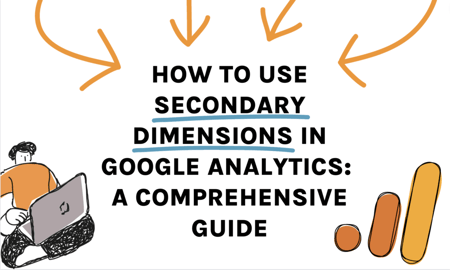The Power of Secondary Dimensions in Search Engine Optimization: Optimizing Your Insights
The Power of Secondary Dimensions in Search Engine Optimization: Optimizing Your Insights
Blog Article
Enhance Your Information Evaluation Using Secondary Measurements
The true depth of insights exists in the integration of secondary dimensions. The critical usage of secondary dimensions raises analysis past the surface area degree, promising a wealth of untapped potential waiting to be found.
Comprehending Second Measurements
Second measurements in data analysis refer to additional characteristics or metrics that supply much deeper understandings when incorporated with key information measurements, enhancing the overall understanding of the dataset. These additional dimensions offer a more comprehensive view of the information, permitting experts to reveal surprise patterns, relationships, and trends that may not appear when only considering primary dimensions.
By incorporating secondary measurements right into information evaluation, experts can get a much more nuanced understanding of the aspects influencing the main metrics. In advertising and marketing evaluation, main dimensions could consist of fundamental customer demographics like age and sex, while second dimensions could incorporate variables such as buying behavior, choices, or geographical location. By incorporating these main and additional dimensions, analysts can create extra thorough client profiles, enabling even more targeted and effective marketing approaches.
Moreover, secondary dimensions can aid in identifying relationships in between various variables, resulting in more exact predictive modeling and decision-making. They enable experts to explore data from numerous point of views, enriching the understandings drawn from the dataset and inevitably enhancing the quality of analysis and strategic referrals.
Benefits of Additional Measurements
When considering data analysis, integrating additional measurements offers a wide range of advantages that substantially enhance the depth and breadth of insights acquired from key data dimensions. By including secondary dimensions such as time, area, or demographic info to the analysis, scientists can gain a more detailed understanding of the primary data factors.
Additionally, second measurements can also aid in segmenting data, allowing for a much more in-depth analysis of specific subsets within the key information. This division can lead to even more targeted methods and activities based on the distinct characteristics of each segment. In addition, second dimensions can aid in validating searchings for from main data measurements, supplying a much more robust and reputable basis for decision-making.
Basically, the benefits of incorporating second dimensions into information analysis are important, offering richer understandings and allowing even more educated decision-making processes.
Applying Additional Dimensions Properly
When incorporating additional measurements, it is crucial to align them with the key dimensions to get much deeper insights into the data. It is necessary to pick secondary dimensions that match the key data without triggering noise or complication in his explanation the evaluation.
Additionally, consider the scalability of the secondary dimensions throughout various datasets or evaluations. By executing second measurements effectively, analysts can improve the depth and precision of their information evaluation, leading to more informed decision-making and workable understandings.
Advanced Techniques With Second Dimensions
For a more advanced approach to data evaluation, incorporating additional measurements can considerably boost the depth of insights obtained. Advanced techniques with additional measurements involve more detailed methods to draw out useful information from data collections.
An additional advanced method is regression evaluation, which aids identify connections in between variables and just how they impact each other. By adding second measurements, such as demographic information or individual actions, to regression versions, you can uncover a lot more nuanced understandings and make more accurate predictions.

Situation Studies: Second Dimensions in Activity

In another scenario, a medical care provider leveraged second measurements to enhance resource allocation. By analyzing person outcomes in regard to geographical place, the organization identified locations with high readmission rates. This led to the execution of targeted intervention programs in those areas, eventually improving person treatment and minimizing healthcare prices.
These study show the power of secondary measurements in uncovering beneficial insights that drive strategic decision-making. By diving deeper into you can try here information analysis past primary metrics, companies can acquire a more detailed understanding of their operations and clients, causing more enlightened and efficient organization methods.
Conclusion
Finally, the consolidation of second dimensions in information analysis is necessary for gaining a detailed understanding of underlying trends and aspects. By making use of techniques such as friend analysis and regression analysis, companies can reveal hidden insights and make even more enlightened decisions. Additional measurements add deepness and breadth to data analysis, permitting businesses to check out information from multiple point of views and drive extra effective outcomes.
In advertising and marketing evaluation, main measurements can consist of fundamental client demographics like age and gender, while secondary measurements could incorporate variables such as purchasing actions, choices, or geographic place.When thinking about information analysis, incorporating second measurements provides a plethora of advantages that significantly boost the depth and breadth of understandings derived from key data measurements.Moreover, secondary measurements can also assist in segmenting data, enabling for an extra in-depth analysis of details subsets within the key data. In addition, secondary measurements can aid in verifying searchings for from primary information dimensions, supplying a more robust and dependable basis for decision-making.
When integrating second dimensions, it is vital to straighten them with the primary dimensions to obtain deeper insights right into the information.
Report this page